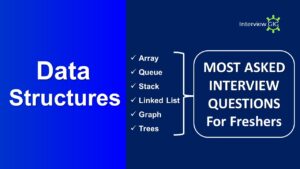What is Django?
Django is a high-level open-source web framework written in Python that enables developers to build web applications quickly and efficiently. It follows the “batteries-included” philosophy, meaning it comes with a wide range of built-in features and tools that simplify web development tasks. Django is known for its emphasis on clean, reusable, and maintainable code, making it a popular choice for web developers worldwide.
What are the Key features and components of Django?
Key features and components of Django include:
- Object-Relational Mapping (ORM): Django’s ORM allows developers to interact with the database using Python classes and methods instead of writing raw SQL queries. It abstracts the database layer and supports various database backends, making it easy to switch databases without changing code.
- Admin Interface: Django comes with an automatic admin interface that allows developers to manage application data without the need to build a separate admin dashboard. It is customizable and provides basic CRUD operations for models.
- URL Routing: Django uses a clear and simple URL routing system that maps URLs to views and helps maintain clean and readable URLs for web applications.
- Template Engine: Django includes a powerful template engine that allows developers to separate the presentation layer from the business logic. Templates are written in a simple syntax and support template inheritance and filters.
- Forms Handling: Django provides a form handling system that simplifies form creation, validation, and processing. It offers reusable form components and built-in protection against common security vulnerabilities like Cross-Site Scripting (XSS) and Cross-Site Request Forgery (CSRF).
- Authentication and Authorization: Django offers built-in support for user authentication and permission management, making it easy to implement user registration, login, and access control features.
- Middleware: Middleware components in Django allow developers to perform actions on requests and responses globally across the application. Middleware can handle tasks such as authentication, caching, and error handling.
- Security: Django emphasizes security best practices and includes built-in protection against common security issues like SQL injection, clickjacking, and more.
- Testing: Django provides a testing framework for creating unit tests and integration tests, ensuring code quality and reliability.
Django’s versatility and ease of use have made it a favorite framework for web developers, from beginners to experienced professionals. It is widely used for building a variety of web applications, including social networks, content management systems, e-commerce platforms, data-driven web apps, and more.
The strong community support, extensive documentation, and the availability of various third-party packages and extensions make Django a powerful and robust choice for web development projects.
How to Create Database and Project in Django?
Creating a database and a project in Django involves several steps. Before you start, ensure that you have Django installed on your system. If Django is not installed, you can install it using pip:
pip install Django
Now, let’s go through the steps to create a database and a Django project:
Step 1: Create a Django Project
Open a command prompt or terminal on your system.
Navigate to the directory where you want to create your Django project.
Run the following command to create a new Django project: django-admin startproject projectname
Replace “projectname” with the desired name for your project.
After running the command, you will see a new folder with the project name created. This folder will contain the necessary files and configurations for your Django project.
Step 2: Configure Database Settings
Open the `settings.py` file inside the project folder with a text editor.
Find the `DATABASES` setting. By default, it will be using SQLite, but you can configure it to use other databases like PostgreSQL, MySQL, or Oracle.
For SQLite:
“`python
DATABASES = {
‘default’: {
‘ENGINE’: ‘django.db.backends.sqlite3’,
‘NAME’: BASE_DIR / ‘db.sqlite3’,
}
}
For PostgreSQL:
“`python
DATABASES = {
‘default’: {
‘ENGINE’: ‘django.db.backends.postgresql’,
‘NAME’: ‘mydatabase’,
‘USER’: ‘mydatabaseuser’,
‘PASSWORD’: ‘mypassword’,
‘HOST’: ‘localhost’,
‘PORT’: ‘5432’,
}
}
Replace `’mydatabase’`, `’mydatabaseuser’`, `’mypassword’`, `’localhost’`, and `’5432’` with your PostgreSQL database name, username, password, host, and port, respectively.
Step 3: Create Database Tables
After configuring the database settings, run the following command to create the database tables:
python manage.py migrate
This command will create the necessary database tables based on the models defined in Django.
Step 4: Create a Django App (Optional)
- If your project requires multiple components, you can create Django apps inside your project. Each app can handle specific functionalities.
- To create an app, run the following command:
python manage.py startapp appname
Replace “appname” with the desired name for your app.
Step 5: Run the Development Server
- Finally, start the development server by running the following command:
python manage.py runserver
- The development server will start, and you can access your Django project by visiting http://127.0.0.1:8000/ in your web browser.
Your Django project is now set up with a database and is ready for development. You can start building your web application using Django’s powerful features and tools.
Which architectural pattern does Django Follow?
Django follows Model-View Controller (MVC) architectural pattern.
How to set/unset session in Django?
Setting Session in Django
request.session[‘key’] = ‘value’
Unset Session in Django
del request.session[‘key’]
How does Django work?
Django can be broken into many components:
Models.py file: This file defines your data model by extending your single line of code into full database tables and add a pre-built administration section to manage content.
Urls.py file: It uses regular expression to capture URL patterns for processing.
Views.py file: It is the main part of Django. The actual processing happens in view.
When a land on Django page, first Django checks the URLs pattern you have created and uses information to retrieve the view. After that view processes the request, querying your database if necessary, and passes the requested information to template.
After that the template renders the data in a layout you have created and displays the page.
What are the advantages of using Django for web development?
- It facilitates you to divide code modules into logical groups to make it flexible to change.
- It provides auto-generated web admin to make website administration easy.
- It provides pre-packaged API for common user tasks.
- It provides template system to define HTML template for your web page to avoid code duplication.
- It enables you to define what URL is for a given function.
- It enables you to separate business logic from the HTML.
What are the database backends supported by Django Framework?
Django officially supports four database backends, they are
- Oracle
- PostgreSQL
- MySQL
- SQLite
In addition to these, you can also use following 3rd parties
- SAP SQL Anywhere
- ODBC
- IBM DB2
- Microsoft SQL Server
- Firebird
What does of Django field class types do?
The Django field class types specify:
- The database column type.
- The default HTML widget to avail while rendering a form field.
- The minimal validation requirements used in Django admin.
- Automatic generated forms.
What is the usage of Django-admin.py and manage.py?
Django-admin.py: It is a Django’s command line utility for administrative tasks.
Manage.py: It is an automatically created file in each Django project. It is a thin wrapper around the Django-admin.py. It has the following usage:
It puts your project’s package on sys.path.
It sets the DJANGO_SETTING_MODULE environment variable to points to your project’s setting.py file.
What is some typical usage of middlewares in Django?
Middleware is a function that acts on or transforms a request/response before/after it passes through the view layer (e.g. adding the user object to the request)
Some usage of middlewares in Django is:
It can be used for Session management,
User authentication can be done with the help of this.
It helps in Cross-site request forgery protection
Content Gzipping, etc.
What are the two important parameters in signals?
Two important parameters in signals are:
Receiver: It specifies the callback function which will be connected to the signal.
Sender: It specifies a particular sender to receive signal from.
What are the some popular websites built on Django framework?
- Youtube
- Google
- Instagram
- Quora
- Pinterest
- Mozilla Firefox
- Disqus
- Bitbucket
- NASA
- Onion
- Reddit
- The Washington Post
- Eventbrite
- Mahalo
What is a difference between Django, Pyramid and Flask?
Flask is a micro framework primarily builds for a small application with simpler requirements. In flask, you have to use external libraries. Flask is ready to use.
Pyramid is built for larger applications. It provides flexibility and lets the developer use the right tools for their project. The developer can choose the database, URL structure, templating style and more. Pyramid is heavy configurable. Django can also used for larger applications just like Pyramid. It includes an ORM.




